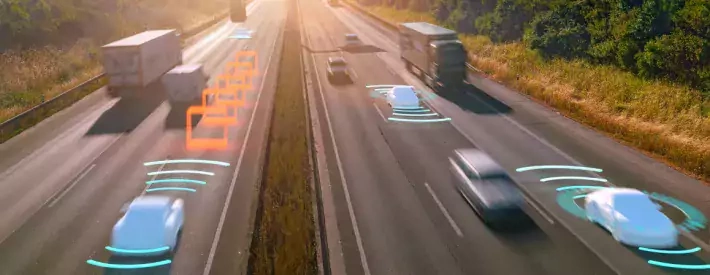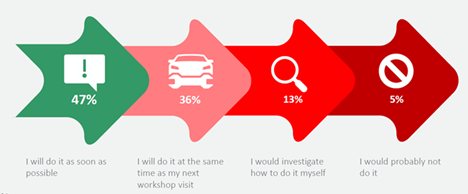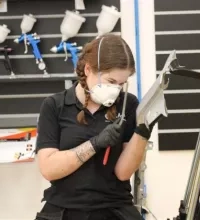Less than half of motorists consider ADAS calibration vital

New IMI research identifies lack of ADAS knowledge could present serious road safety risk
A new report from the Institute of the Motor Industry (IMI), ‘Understanding the Knowledge Gap’, warns that Advanced Driver Assistance Systems (ADAS) can only meet their safety objectives if accurately, correctly and safely maintained, repaired and serviced by fully qualified technicians. Yet it seems that less than half (47%) of motorists see ADAS calibration as a vital job and only 1 in 5 can identify ADAS features in their vehicle.

The number of vehicles on UK roads that use ADAS is growing rapidly. The IMI estimates that by the end of 2023, at least one in ten cars will feature Level 2 autonomy, growing to almost half of the car parc by 2030[i]. These technologically advanced vehicles make roads safer for all users. However, the IMI research[ii] found that while 86% of more than 1,000 drivers said they have at least one ADAS feature in their vehicle, just 18% understand what it is and could correctly identify it.
Research Highlights
- Less than half (47%) see ADAS calibration as a vital job
- 39% of drivers incorrectly believe that ADAS calibration is done during an MOT
- 16% of drivers were confident that ADAS on their vehicle has been recalibrated after repairs or maintenance
- 36% said that if their vehicle displayed an alert advising ADAS calibration, they would leave it until their next workshop visit

As Steve Nash, CEO of the IMI explained, the lack of consumer understanding about ADAS is a cause for concern: “It is extremely worrying that so few drivers fully understand their vehicle or appreciate the importance of maintaining its systems. ADAS technology is not checked as a matter of course at the annual MOT and it is the motorist’s responsibility to ensure their vehicle is properly maintained. If a motorist is not aware of ADAS technology how can they be certain it is being maintained properly?
“Motorists need to be as diligent as possible about vehicle safety, getting any ADAS alerts reviewed in a timely manner by a technician qualified and fully certified to work on the technology. Unfortunately, with the current shortage of ADAS qualified technicians[i], finding someone locally who can do the job proficiently may be more time consuming than expected. But it’s imperative that drivers aren’t tempted to take a shortcut and take their car to someone who is not ADAS qualified. If a system such as lane departure warnings or adaptive cruise control fail at high speed on a motorway, the potential consequences don’t bear thinking about.”
ADAS technologies that are not properly maintained and calibrated can deliver inaccurate readings or false alerts and could even malfunction and compromise the vehicle's safety. The lack of knowledge could also put motorists at a disadvantage when selecting a garage for vehicle repairs, which could result in a vehicle not being properly recalibrated for all its ADAS features. The IMI believes it’s not just technicians that need to understand ADAS; sales and front of house staff need to understand the technology otherwise they could be feeding consumer ignorance.
Nicholas Lyes, Director of Policy and Standards at IAM RoadSmart, added:“ADAS technology has the potential to improve road safety, but only if used correctly. If it isn’t, not least without a full understanding of what the systems are and are not capable of, it can have the opposite effect, with potentially worrying consequences for all road users.
“IAM RoadSmart believes ADAS training can have a huge part in getting consumers familiar with technology that will save their lives. As the UK’s leading road safety charity, we would be more than happy to work with dealerships to help promote these systems as they begin to be supplied as standard on an increasing number of vehicles.”
What is ADAS?
ADAS calibration, refers to the process of adjusting and verifying the functionality of sensors and cameras installed in modern vehicles. These systems use sensors and cameras to detect obstacles, maintain lane positioning, and control acceleration and braking, among other functions. Proper calibration ensures that these systems function accurately and effectively, minimising the risk of accidents and ensuring the safety of drivers and passengers. ADAS calibration is typically performed after a repair or replacement of a vehicle's windshield, cameras, or sensors, and may require specialised equipment and expertise to complete.
ADAS calibration is essential for ensuring the safety of drivers, passengers, and other road users. These systems rely on accurate measurements and data to operate effectively, and even slight deviations from the recommended specifications can compromise their performance. Improper calibration can result in false alerts or failure to detect hazards, leading to accidents, injuries, and even fatalities. By ensuring that ADAS systems are properly calibrated, drivers can rely on them to help prevent accidents and improve overall safety on the road. Additionally, many newer vehicles require ADAS calibration to maintain their warranty, making it an important aspect of vehicle maintenance and repair.
ADAS technology focuses on increasing safety and convenience, without taking full control away from the driver. Systems such as lane assist, adaptive cruise control and self-parking allow the vehicle to control steering, acceleration and braking. Problems with the electronics, sensors and software within these vital systems could lead to serious safety breaches or even collisions, which could be highly dangerous at speed on a motorway. Proper maintenance and regular servicing by a technician with the relevant and up to date training, is essential to keep drivers and other road users safe.
[i] With EU regulation mandating all newly produced vehicles from July 2022 onward incorporate several safety components, including Level 2 autonomy such as lane centring and adaptive cruise control, the IMI forecasts 44% of the UK car parc will have Level 2 autonomy by 2030.
[ii] Research conducted by GiPA, March 2023 – 1036 motorists





